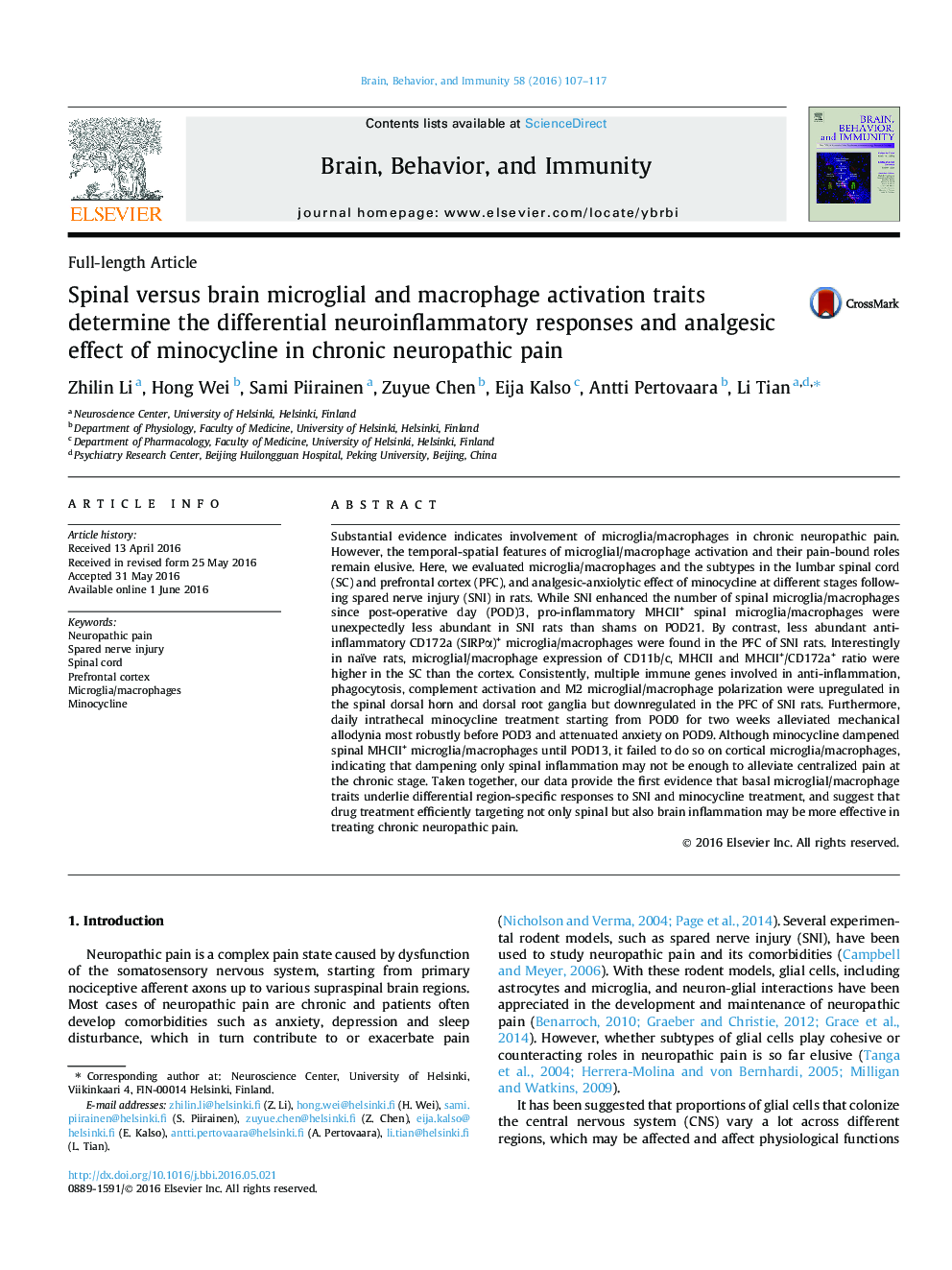| کد مقاله | کد نشریه | سال انتشار | مقاله انگلیسی | نسخه تمام متن |
|---|---|---|---|---|
| 5040972 | 1473909 | 2016 | 11 صفحه PDF | دانلود رایگان |
- Basal microglial/macrophage profiles in the spinal cord (SC) and brain were different.
- SNI induced differential microglial/macrophage responses in the SC and prefrontal cortex.
- Intrathecal minocycline treatment alleviated allodynia at early but not late stage.
- Minocycline dampened spinal but not cortical microglial/macrophage pro-inflammatory activation.
- Treatment targeting both spinal and brain inflammation may be more effective in pain control.
Substantial evidence indicates involvement of microglia/macrophages in chronic neuropathic pain. However, the temporal-spatial features of microglial/macrophage activation and their pain-bound roles remain elusive. Here, we evaluated microglia/macrophages and the subtypes in the lumbar spinal cord (SC) and prefrontal cortex (PFC), and analgesic-anxiolytic effect of minocycline at different stages following spared nerve injury (SNI) in rats. While SNI enhanced the number of spinal microglia/macrophages since post-operative day (POD)3, pro-inflammatory MHCII+ spinal microglia/macrophages were unexpectedly less abundant in SNI rats than shams on POD21. By contrast, less abundant anti-inflammatory CD172a (SIRPα)+ microglia/macrophages were found in the PFC of SNI rats. Interestingly in naïve rats, microglial/macrophage expression of CD11b/c, MHCII and MHCII+/CD172a+ ratio were higher in the SC than the cortex. Consistently, multiple immune genes involved in anti-inflammation, phagocytosis, complement activation and M2 microglial/macrophage polarization were upregulated in the spinal dorsal horn and dorsal root ganglia but downregulated in the PFC of SNI rats. Furthermore, daily intrathecal minocycline treatment starting from POD0 for two weeks alleviated mechanical allodynia most robustly before POD3 and attenuated anxiety on POD9. Although minocycline dampened spinal MHCII+ microglia/macrophages until POD13, it failed to do so on cortical microglia/macrophages, indicating that dampening only spinal inflammation may not be enough to alleviate centralized pain at the chronic stage. Taken together, our data provide the first evidence that basal microglial/macrophage traits underlie differential region-specific responses to SNI and minocycline treatment, and suggest that drug treatment efficiently targeting not only spinal but also brain inflammation may be more effective in treating chronic neuropathic pain.
Journal: Brain, Behavior, and Immunity - Volume 58, November 2016, Pages 107-117
